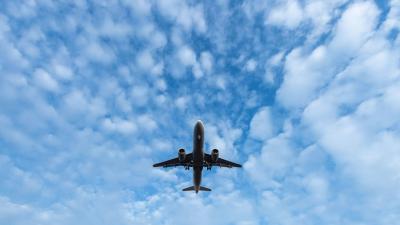Travel phobia is an intense, irrational fear of traveling known as a phobia. Fear itself is not always a bad thing; it is a "natural" biological reaction to potentially harmful situations such as accidents, fires, or violence. Anthony Brickhouse, a professor of aviation safety at Embry-Riddle Aeronautical University in Daytona Beach, Florida, explains that the airplanes we travel on today are safer than ever before.
According to the International Air Transport Association (IATA), a trade association for airlines, the number of commercial aviation accidents has decreased over the years. In 2023, the commercial aviation industry experienced 30 incidents, one of which was fatal, resulting in 72 deaths in Nepal, attributed to pilot error. The previous year, there were five fatal accidents that led to 158 deaths. In 2013, there were 11 fatal incidents causing 638 deaths, according to IATA. In other words, the risk of being on a fatal flight has decreased.
Arnold Barnett, a statistician at the Massachusetts Institute of Technology who has studied airline safety, stated that from 2018 to 2022, the odds of a passenger dying on any flight anywhere in the world were 1 in 13.4 million. Between 1968 and 1977, the odds were 1 in 350,000, according to a previous report by CNN. It is understandable that anxiety about flying may be at high levels, but is there any reason to be concerned?
In this context, Jeffrey Thomas, an aviation safety expert and editor of Airline Ratings, which publishes an annual list of the safest airlines, revealed that there is no reason for concern. He added, "Certainly, Boeing aircraft, for example, have experienced some production issues, which they are working to resolve. But the bottom line is that there are so many inspections being applied now that I don’t think anyone should feel worried."
Anthony Brickhouse pointed out that "flying is the safest mode of transportation." He continued, "If you look at the numbers, you are more likely to be involved in an accident while driving to the airport than while flying at 38,000 feet. I tell people that if you make it to your flight, the most dangerous part of your day is already behind you."
Additionally, Brickhouse emphasized that passengers should pay less attention to the specific airplane they are flying on and focus on things they can control, such as their personal safety when boarding the aircraft. He advised, "For example, by paying attention during the safety briefing, being aware of emergency exit locations, or not traveling with children in their laps."
Furthermore, the latest safety report from IATA indicated that in 2022 there were a total of 39 commercial aviation accidents globally, with 158 fatalities on board, which equates to one accident for every 0.83 million flights.
"Accidents are rare in aviation," said Willie Walsh, director general of IATA, in an accompanying statement: "Five fatal accidents occurred among 32.2 million flights in 2022. This tells us that flying is among the safest activities anyone can engage in."
However, despite the extremely low risks of flying, it is not risk-free. He added that a careful analysis of trends, even at these very high levels of safety, is what will make flying even safer. The International Air Transport Association (IATA) stated that in the past ten years, the industry has improved overall safety performance by 48%.




